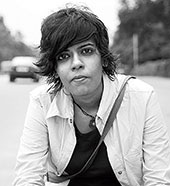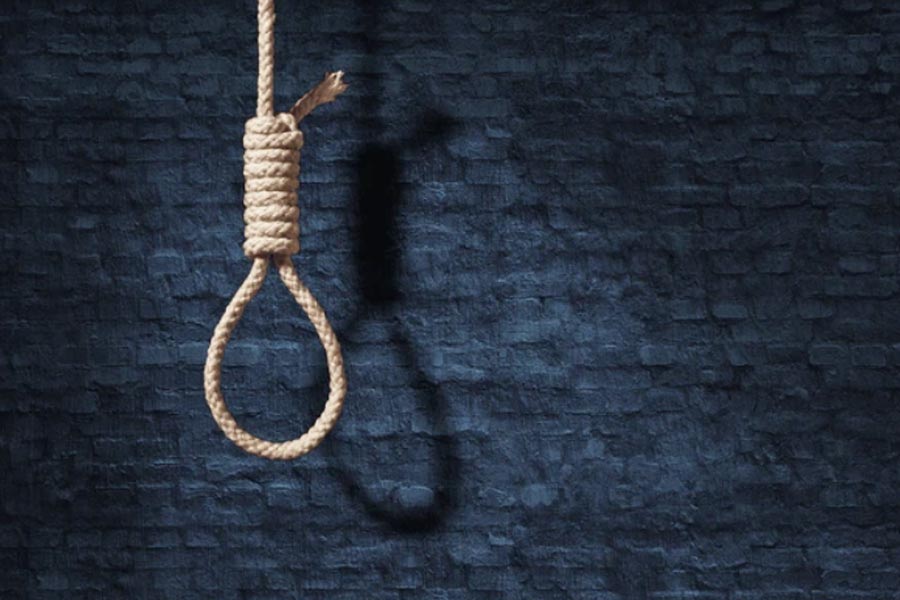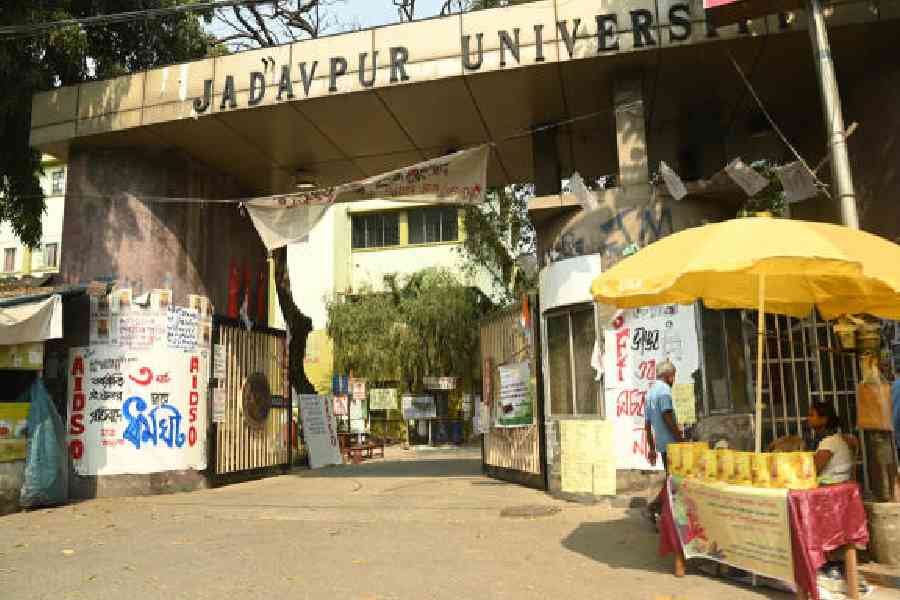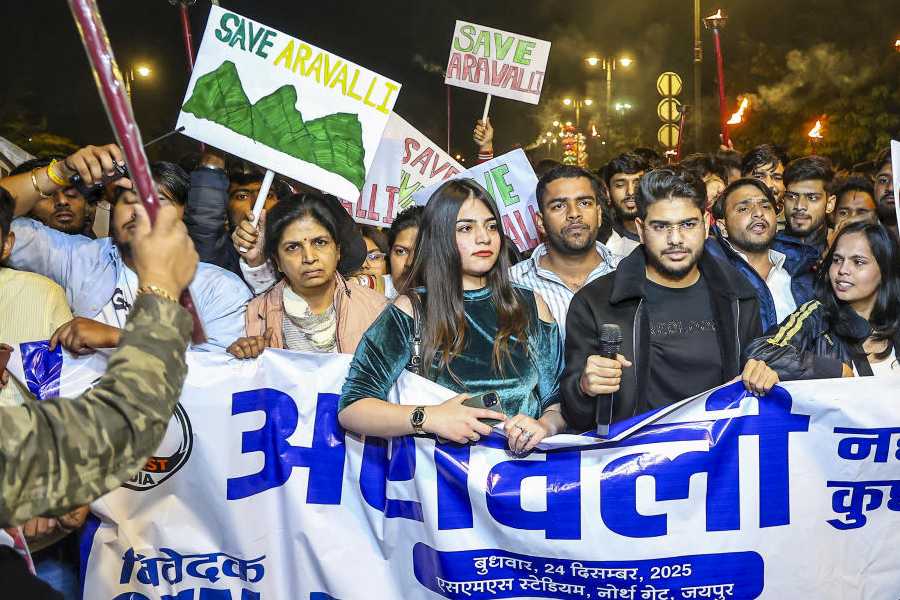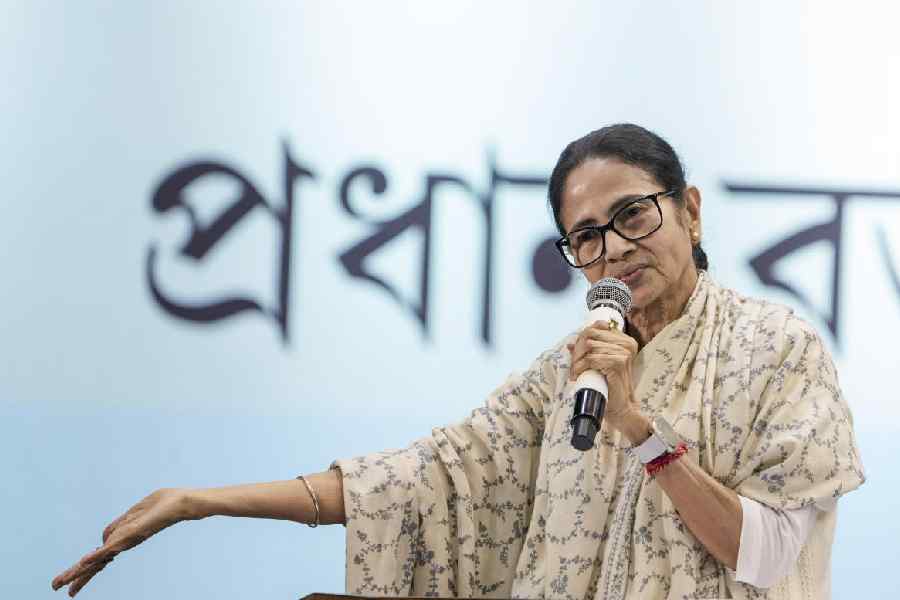
With tongue firmly in cheek, a group of students turned in a design assignment that went viral online and gave Indian-style sexism a firm boot in the rear. Done in educational Indian Book Depot jacket format, they created a poster with 12 illustrations to define a "bad girl" in India.
She cannot make round rotis, rides a bike, watches pornography, goes to Goa, pouts and, one that spotlights the blame-the-dame attitude the most, has breasts. Just being a woman is enough to draw censure.
The five students - Furqan Jawed, Sparsh Saxena, Roshan Shakeel, Stuti Kothari and Jaiwant Pradhan - from Bangalore's Srishti School of Art, Design and Technology, creatively lampooned gender bias in society with Bad Girl and were taken aback by the attention it got after Jawed uploaded it online.
"We wanted to push it beyond the point of absurdity where just about anything can make you bad," says Roshan Shakeel who, with the rest of team, was initially shocked that the poster was taken for real and some people were offended by it.
Keeping Bad Girl company is Ideal Boy or Adarsh Balak - a comic in the same old-school artistic style, but one which lists all that a good boy is supposed to do (go for a walk, join the NCC). One frame has a schoolboy offering a joint to his father - T for toke, the blurb says in Hindi.
They are not the only ones to use humour as heft in tackling gender stereotypes and inequalities.
Consider Aarthy Parthasarathy's Royal Existentials webcomic series that uses vintage miniature art characters to address contemporary social inequality and feminist commentary.
Parthasarathy, 35, was inspired by California artist David Malki's Wondermark webcomic which used Victorian era imagery for social critique. "The comic is my way of ranting," says the graphic artist and filmmaker at Falana Dimka films. Men who are fans of the comic tell her their favourite are those on patriarchy.
Then there is Nisha Susan's The Ladies Finger (LF) webzine. "I am from Kerala and so we are used to arguing about everything," jokes Susan, who was the initiator of the 2009 Pink Chaddi campaign, launched by the Consortium of Pubgoing, Loose Forward Women. The campaign had drawn thousands of donors who sent pink underwear to a moral policing outfit in Mangalore which had beaten up women for drinking in a pub.
"LF wanted to write about things without being too pompous. So we have this general tendency to respond to everything with a little bit of fun," Susan says. Thus director Anurag Kashyap's women-unfriendly statements (rape is an accident, he said - but later maintained that he was quoting somebody else) were countered through songs on LF.
The regressive two-finger test for sexual violence victims is exposed in an article, "The Two-Finger Test Doesn't Work? No One Told The Medical Colleges", with an accompanying graphic that says, "You can do many things with two fingers but you cannot determine rape."

Humour, clearly, is an effective strategy. "The humour comes from how many things have got on to the list and what are the most absurd things possible," Shakeel explains. "But it also actually happens and that is the point we were trying to make with it."
The Bad Girl meme, of course, has been seen by some, notably certain traditionalists, as a consequence of Western influence. "In all matters of our life we have said sophistication is equal to Western. But only when it comes to matters of gender - toiing! - we suddenly want to go back to tradition," Susan laughs.
How can autonomy be a Western concept, wonders Kavita Krishnan of the All India Progressive Women's Association. To her, the argument about how people dress is a distraction because the issue is of autonomy and not about clothes.
"What is far more disturbing than clothes is to marry outside your caste. If you say a woman marrying irrespective of caste goes against Indian culture, you are saying that discrimination on the basis of caste, community, gender is how we visualise India. But that is not how the Constitution visualises India. It [the Constitution] is about a free society and to make choices freely," Krishnan contends.
The Bad Girl label is not restricted to just social perceptions. It is generously thrown at women who disagree with authoritarianism of any kind. Some will see it as old-fashion rebellion - but if the government doesn't like the dissent, it may even see it as "anti-national".
Greenpeace member Priya Pillai, for instance, became a "bad girl" for her activism and was offloaded a plane in January - till the Delhi High Court reminded everyone earlier this week that dissent was not treason. Those who dissented in noisy debates about the Pillai incident were labelled "Naxals who have pre-marital sex" by co-panelists on television debates, as anchors looked on mutely.
Krishnan, who was speaking up for Pillai, notes that few TV channels carried the court's verdict and text as eagerly. "The mud is broadcast but not the vindication. So the mud sticks, not the truth!"
The activist had protested outside former Delhi chief minister Sheila Dixit's house after she said that television journalist Soumya Vishwanathan, who was murdered on her way home from work, was being "too adventurous" for being out late at night. Bad girl, anyone?
"It is victim blaming," says Krishnan, for whom the enthusiastic support in response to her protest was an "eye-opener". She explains that she was pressing the right to be "adventurous" and not to have to exchange freedom for safety.
The Bad Girl poster bolstered that.
"It was lovely, absolutely. The way it went crazily viral, it showed up everywhere," Krishnan adds.
Many of those The Telegraph spoke with agreed that the Delhi gang rape of December 2012 was a catalyst and a watershed moment. Shilo Shiv Suleman's Fearless Collective was one of the responses to the incident and showcases posters by artists and designers affirming courage.
"The Delhi incident was a catalyst for greater dialogue, something that people would engage with privately led to a larger discussion publicly. Everyone wanted answers," says Parthasarathy, recalling how she stayed up nights thinking about the incident.
What is indisputable is that people - almost everywhere - are speaking up and out against inequality.
"People are willing to challenge the notion of restrictions - on who should one be allowed to marry or love. The temperature I gauge when I speak to young people in the country is that there is such a huge willingness to re-examine old prejudices," Krishnan points out.
No doubt. If the Srishti-five's wearing of the feminist hat is anything to go by.
"If feminism is about gender equality then, yeah, I am a feminist and okay with it. We know the connotation of the word we want to go by. It is not a bad word," Furqan Jawed says.

